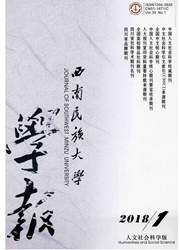

 中文摘要:
中文摘要:
随着旅游业的蓬勃发展,景区游客接待量逐年上升。在旅游规模不断扩大的同时,景区游客的有序化管理显得格外重要。景区的有序化管理不仅能提高旅游景区服务质量,还有助于排除重大安全隐患。景区游客游览系统秩序度量是景区有序化管理的关键环节。因此,文章针对信息化建设欠完善景区,提出了一种基于语言变量的景区游客游览系统秩序度量方法。该方法通过采集景区管理人员对各个景点负荷的语言描述数据,考虑管理者的层级,在综合集成景区游客游览系统的负荷率以及系统负荷均衡程度的基础上,提出了游客游览系统含参度量秩序的度量模型。该模型可通过管理者角色参数∞的选取来实现各层及管理者对游客游览系统秩序的度量。最后,以九寨沟风景名胜区某些景点构成的游客游览系统为例来说明该方法的可操作性及可行性。
 英文摘要:
英文摘要:
With the vigorous development of tourism, travel is gradually permeating into daily life in China. People are enthusiastic about tourism, more people are taking part in this activity, which is leading to higher numbers of domestic tourists in scenic areas. At the same time, with the recovery of the global economy, the number of international tourists is rising every year. However, the capacity of tourist attractions is often determined and limited, and this situation brings a series of management problems. Managers have to consider how to protect the environment, design new visiting routes, and schedule tourist groups. The continual expansion of tourism may not only cause a drop in the quality of service, but could also bring great potential dangers, not only to the tourist, but also to the wildlife of scenic areas. Without a proper organization of visitors serious imbalances may result within scenic areas; some spots are overloaded while some are almost empty. In these overloaded spots, too many visitors share limited space. The resulting crowded visitor environment not only gives a negative impression to tourists, it may lead to visitor conflict, physical danger, and most of all damage to plants and animals. How to ensure a good arrangement of visitors, and provide them with efficient and satisfactory service, has been a long term topic of discussion. An accurate depiction of the system' s state is necessary to arrange visitation. Until now, some visitor attractions have used advanced information technology to collect data from each scenic area and monitor their status. These can provide tourist numbers accurately, but a large number of visitor attractions do not have this capacity. Tourist numbers in each scenic area cannot therefore be collected accurately in most cases. How to measure the order degree in this situation has become an important question. In this paper, an order degree estimation process is proposed. To begin with, a network model is established based on the routing structure within scenic ar
 同期刊论文项目
同期刊论文项目
 同项目期刊论文
同项目期刊论文
 Simulation and Prediction of Decarbonated Development in Tourist Attractions Associated with Low-car
Simulation and Prediction of Decarbonated Development in Tourist Attractions Associated with Low-car A new improved forecasting method integrated fuzzy time series with the exponential smoothing method
A new improved forecasting method integrated fuzzy time series with the exponential smoothing method A Satisfaction Evaluation Method for Scenic Spot based on Linguistic Weighted Arithmetic Average Ope
A Satisfaction Evaluation Method for Scenic Spot based on Linguistic Weighted Arithmetic Average Ope Evaluation Model Construction and Simulation Research on Tourist Diversion Strategy in Ecotourism Sc
Evaluation Model Construction and Simulation Research on Tourist Diversion Strategy in Ecotourism Sc Research on Scenic Spot’s Sustainable Development Based on a SD Model: A Case Study of the Jiuzhai V
Research on Scenic Spot’s Sustainable Development Based on a SD Model: A Case Study of the Jiuzhai V Modeling and Pareto optimization of multi-objective order scheduling problems in production planning
Modeling and Pareto optimization of multi-objective order scheduling problems in production planning Research on Diffluent Network Prediction Model of Ecotourim Scenic Spot Based on the Dynamic Fuzzy C
Research on Diffluent Network Prediction Model of Ecotourim Scenic Spot Based on the Dynamic Fuzzy C The Dynamic Coordinated Development of a Regional Environment-Tourism-Economy System: A Case Study f
The Dynamic Coordinated Development of a Regional Environment-Tourism-Economy System: A Case Study f 期刊信息
期刊信息
